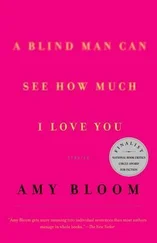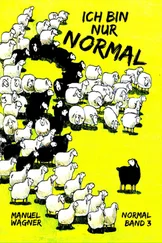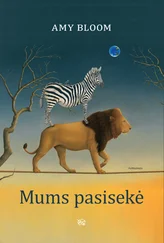I call Ray Blanchard, a self-described “traditional clinician,” who is head of clinical sexology services at Canada’s Centre for Addiction and Mental Health and has been studying sexuality for thirty years. “No one knows,” he says. “I consulted several colleagues, and the consensus is that there’s no useful epidemiological information. Period.”
I check with Jane Ellen and Mary Frances Fairfax of Tri-Ess, the Society for the Second Self, “a family-oriented support group for heterosexual crossdressers.” The Fairfaxes (this is the last name they use for their crossdressing life, their mutual invented femme name) live in Texas, where Jane Ellen is otherwise Chet, and a physician, and a fierce cribbage player and the father of three boys, two in college, one in prep school. They offer that at last count there were eleven hundred crossdressers and three hundred twenty wives in Tri-Ess’s thirty chapters nationwide, but they don’t know how many heterosexual crossdressers there are either.
“Maybe three or four million,” Jane Ellen hazards. “Maybe somewhere between three and five percent of the population. People who claim it’s more, I think that’s just, you know, a minority wanting to be bigger than it is. And people who say more like one or two percent, I think those are the ones who are ashamed.” When I ask Ray Blanchard for an estimate, he says he thinks three to five percent of the population is about right too.
These are just about the only two points of agreement between Blanchard and the Fairfaxes: no one knows how many heterosexual crossdressers there are, and all these men in dresses who assert that they are straight, sometimes to the point of annoying everyone else, are straight. They may not be straight in exactly the way that noncrossdressing men are — most heterosexual men don’t look at an attractive woman and think, I’d like to have sex with her, I’d like to wear her dress, I’d like men and women to look at me as they look at her — but they are straight.
It was precisely for these men that Tri-Ess was founded in 1976, as a melding of several crossdressing groups, including the historic Hose and Heels Club, which began meeting in California in 1961, and is to many crossdressers what Stonewall is to gay men: the beginning of the end of shame (although not, for the crossdressers, the end of fiercely preserved anonymity). Tri-Ess is now the largest organization for heterosexual crossdressers and their spouses, by which they mean wives, and although nobody would object if a female-to-male crossdresser and her husband wanted to join, it is true that they have not yet, and it is true that neither the folks at Tri-Ess nor I can quite imagine the dynamics of that couple, since the spousal, role requires an abundance of traditional wifely virtues: accommodation, compromise, and gracious acceptance of that which is unwelcome, and often truly painful. The “spouses and partners” who are mentioned so frequently in Tri-Ess literature and who attend the SPICE workshop, which Tri-Ess sponsors, are women.
The Fairfaxes, a little John Gray, a little country doctor in their beaming certainty and parental concern for the weaknesses of others, are the driving forces behind Tri-Ess. For some crossdressers, Tri-Ess is a beacon of hope in a society that judges them weirdos and queers when they know they are not. For critics within the crossdressing community, the Fairfaxes are good people, but misguided about the nature of crossdressing, even self-deceiving. Lots of crossdressers take issue with the Tri-Ess focus on “family values” and heterosexuality. The Tennessee Vals, for instance, will welcome you “if you consider yourself a crossdresser, transsexual or any other type of gender bender … whether gay or straight, bisexual or asexual.” There is a big-tent movement among crossdressers these days, and many groups don’t share Tri-Ess’s exclusionary philosophy.
Jane Ellen Fairfax is a man with a mission: to save crossdressers from their worst selves and to save their marriages. Mary Frances, firm but unassuming, competent, and mild except when offended, is his partner in this, and has been the secretary of Tri-Ess’s board of directors (of which Jane Ellen is the chair) since 1988.
Jane Ellen has a hearty, blunt demeanor that is sugared over in the Southern manner when he’s crossdressed, more emphatic when he’s “en drab,” as they say, but he is always smart, always tenacious and unshakable in his self-esteem and in his beliefs, which include churchgoing Christianity and the platform of the Republican Party. He sees crossdressing as more than a hobby and something quite different from a problem. He insists that the wearing of women’s clothes is both relaxing and expressive of a feminine self that is nurturing and gentle, and that can enhance any marriage if the wife is wise enough to appreciate it and strong enough to corral what can be, as Jane Ellen admits, a narcissistic, self-indulgent habit.
Once a wife or partner realizes her mate isn’t leaving her for another man or for a new life as a woman, or taking risks that could destroy their financial and family life, the two of them can seek a balanced solution.… Many of the traits that attracted her in the first place — sensitivity, kindness, appreciation of beauty, etc. — can now be seen as belonging to that “woman within.”
[Tri-Ess pamphlet, “Do You Know Someone Who Is a Cross Dresser?” February 2000]
A central tenet of Tri-Ess is that crossdressing is a gift.
Crossdressers are blessed with an additional facet to our personalities. As we accept our dual, masculine-and-feminine, “bi-gendered” gift, and seek to understand and explore it, the result is a very fulfilling broadening of our entire personality.… Our occasional adoption of a complete feminine persona and total gender role presentation is an outward personal expression of our inner feminine feelings. We dress appropriately in emulation, rather than in mockery, of femininity.… We cultivate our complete feminine image, with lingerie, makeup, wig, padding for breasts and hips, as well as feminine clothing, shoes and accessories and even a femme name.
[Tri-Ess pamphlet, “Tri-Ess Today,” 2000]
The Fairfaxes hope to persuade the world outside Tri-Ess that heterosexual crossdressers are just normal folks, not at all like those gender outlaws and gender-benders — bearded men in dresses, “chicks with dicks”—whom Jane Ellen calls “gender mockers.” The Fairfaxes want crossdressers out of the closet, not because Tri-Ess wishes to defy or upend society, but because they believe that if society understood how normal crossdressing is, there would be no resistance to it; it would be seen as no stranger a form of relaxation than golf. The words that Ray Blanchard uses when he talks about crossdressing—“fetish,” “continuum of gender dysphoria,” “erotic self-absorption”—are words the Fairfaxes don’t ever want to hear. It upsets them to have crossdressing viewed as being about sex, which they try to get as far away from as possible, or as odd, although they know it is, because they also know that they are exactly the kind of people — Christians, family people, Texans — that George W. Bush wants and needs. When you say “crossdresser,” Jane Ellen and Mary Frances want you to think only of a guy relaxing in a dress.
“Of course it’s not relaxing,” Blanchard says, with some heat. “Heels and makeup and a wig and a corset? It’s preposterous. Even women don’t find that relaxing. Relaxing is a pair of sweatpants, clothing that doesn’t even feel like clothing. Crossdressers want to normalize this, to have it seen as relaxation and self-expression. I’ve had people say to me, ‘You know, I bet if there wasn’t all this stereotyping, these people would not choose to wear a dress.’ I say that’s nonsense. The crossdressing is an attempt to resolve an internal conflict, and it’s not about fabric. If we had clothing that was identical in every way, including fabric and shape, except men wore shirts with four buttons and women had shirts with five, crossdressers would want more than anything to have the shirt with five. We don’t know why.”
Читать дальше












